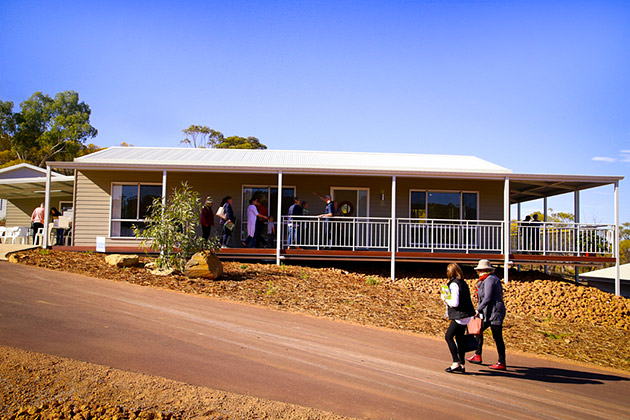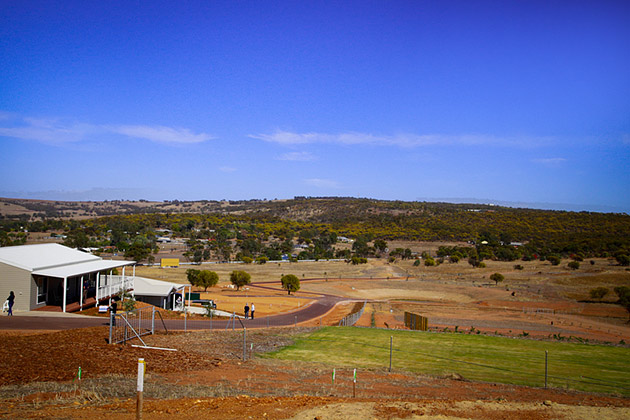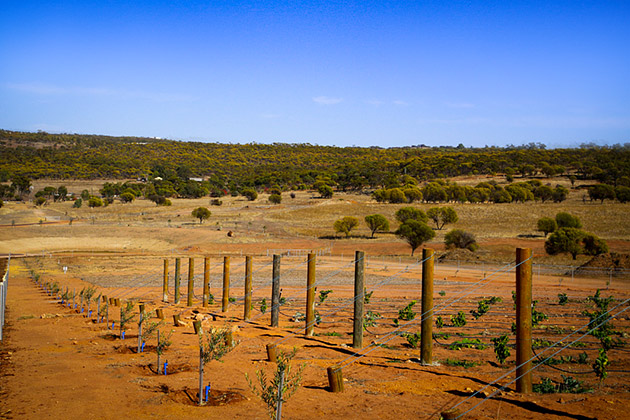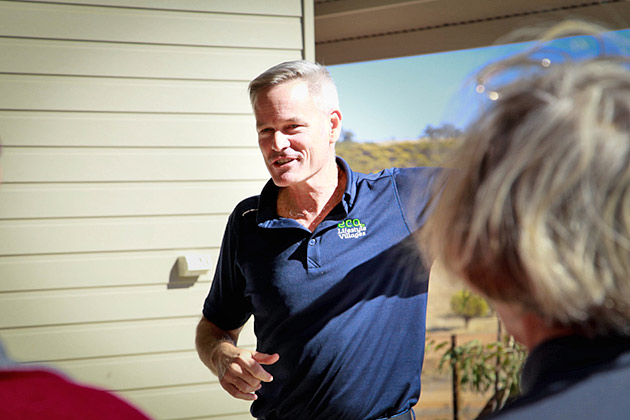20 May, 2019 By: Cristy Burne
Generating its own sustainable power is just the beginning for a new lifestyle village in Northam.
An hour from Perth, if you're looking for retirement, community and a more sustainable life, a new eco-village for the over 45s may have what you need, with residents set to go almost completely ‘off the grid’.
The Northam Eco Lifestyle Village will supply its own energy through a community micro-grid, recycle its own wastewater, grow its own seasonal fruit and vegetables — and maybe even have a shot at turning some of that produce into wine and nibbles.
Situated on Mount Ommaney Hill, Northam, the 50.8-hectare site has approval for 250 homes, which will get discounted renewable power from the community micro-grid.
It's the first time a development of this size that makes and supplies its own power for its community has been trialled in WA, and it will likely lead to many more similar developments, where the 'village' owns its own power source.

Home-grown energy
As well as being more sustainable, reducing residents’ power bills through the community micro-grid is a big driver for the project, says Mike Hollett, Director of H&H Development Enterprises, which is behind the project.
“A big concern for many retirees is ongoing costs,” Hollett says. “We wanted to find ways to reduce those ongoing costs.
“We’ll run the grid at cost,” Hollett says. “There’ll be no fixed fee for access, and we hope to be able to sell power to residents for 15 cents per unit.”
Given most households currently pay Synergy more than 28 cents per unit, plus around $1/day connection fee, the savings for residents could soon add up.
Solar power for the community will be generated by solar panel arrays on the rooftops of common areas, like the clubhouse and carports, so residents don't need to install their own rooftop panels. Excess power generated will be stored in the micro-grid through batteries, and if there is not enough sun shining, the community can still tap into Western Power's energy supply.

With each home individually metered, residents will only pay for the energy they use.
The micro-grid has been designed to grow as the village grows. The initial stage will include 120 solar panels generating approximately 40kW of power and using a shared 9.8 kWh LG Chem battery.
“That should be more than enough to power the 16 homes in Stage 1 of the development,” Hollett says.
“From Stage 2 onwards, we hope to be 70 per cent off-grid, progressing to virtually completely off-grid in three to four years’ time.”
Hollett is also not ruling out adding and using other forms or renewable energy, with wind power a contender to make the most of the thermal winds coming up from the valley below.
“Solar and battery technology is changing so fast, so by building the grid organically and adding to it as we need, we can ride that wave of improving technology.”
To further reduce energy consumption, there’s plenty of wriggle room for positioning homes to optimise passive heating in winter, while catching the cool breezes in summer.
Water wise
Hollett, who is also chairman of the Water Corporation, is passionate about wastewater recycling. A wastewater treatment plant for the village has been installed, and designed to cut use of potable water by 40 per cent.
“Waste water is treated to a non-potable standard, then disinfected with chlorine,” Hollett says. The water is then fit for purpose to irrigate the onsite orchard, with levels of nitrogen and phosphorus benefiting plant growth, he says.

The community orchard is a big part of both the lifestyle being sold to the residents of its future 250 homes, but also plays a large part in making the village as sustainable as possible. While the orchard will be professionally managed, residents who want to are encouraged to get involved.
“We’ve got 100 olive trees in the ground, and there are pumpkins and watermelons and zucchinis. At the moment we’re just giving this produce away, but it’ll also be available to residents.”
That produce will also include free-range eggs from chickens, fish for the fish farm, bee-hives for honey, a micro-brewery and potentially some village-made wine.
And any green waste will be used for mulch.
“We want it to feel like you’re part of a completely sustainable community,” says Hollett. "And given we are keeping costs to buy into the development affordable, it means we can offer that sustainable lifestyle to more people. It's very exciting. We really are showing the way future large scale developments can be done."

If you would like to find out more about Northam Eco Village visit their website.
